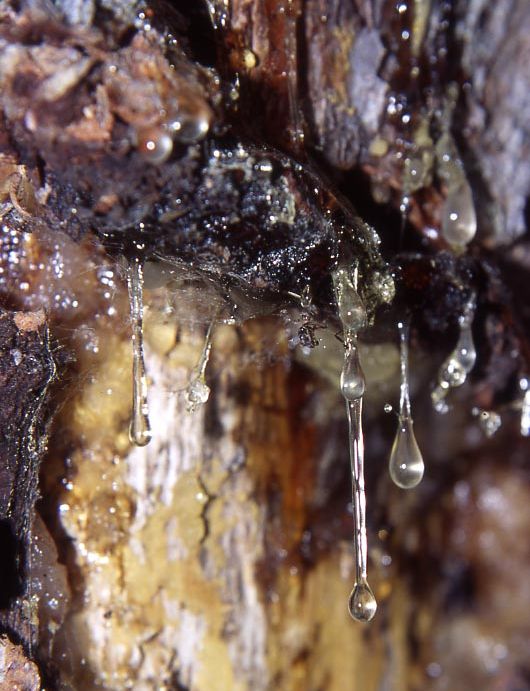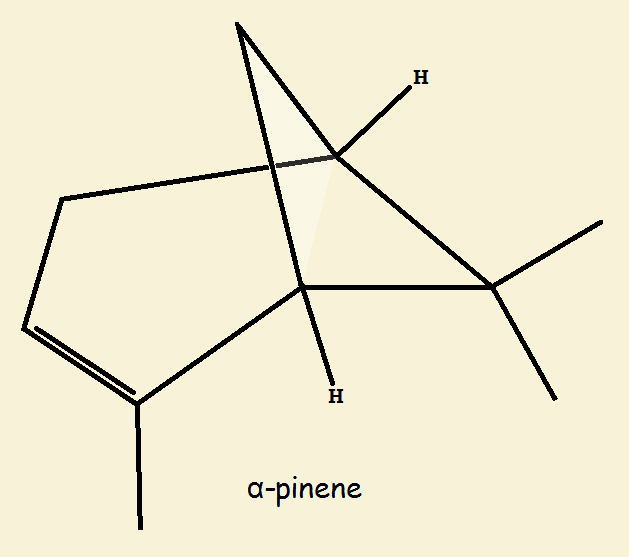
Turpentine was once a very common household solvent. It seemed as if every household had a can in their garage. Turpentine is produced by distillation of pine tree resin. The solid remaining after distillation is called rosin. Doubtless the decreased household use of turpentine is because of an increase in water-based products such as paints, replacing oil-based equivalents. Petroleum based solvents have contributed to the decline.
Solvent Only?
Still, turpentine is more than just a useful solvent. It can be separated into fragments sometimes referred to as isolates. The primary isolate is pine oil, which is used, among other things, in household cleaners. Turpentine yields compounds that are useful in chemical synthesis. Chemicals readily available from nature that can be processed cheaply are hard to resist. Turpentine is rich in the terpenes α- and β-pinene.

What Is a Terpene?
The name terpene was derived from turpentine. Also called isoprenoids, terpenes are hydrocarbons, most often associated with essential oils, fragrances, and insecticides, which could be (if it was desirable) synthetically derived from isoprene. Isopentenyl pyrophosphate and related compounds achieve such syntheses in nature.

Terpene hydrocarbons can be converted into derivatives or terpenoids. Examples include limonene, camphor, citral, linalool, and menthol. Clearly another use of terpenes is in the medical field. It is instructive to mentally divide up terpene and terpenoid structures into their connected isoprene units. See the article Terpenes and Terpenoids: Isoprene Rule.
What’s Rosin Good For?
The clear yellow to black solid rosin is useful in a number of ways. It is used by violinists to coat the hairs on their bow, that substance reducing slip. It is used in printer’s inks. And rosin is used in varnishes, fluxes, and sealing wax. Chemically, rosin is a relatively low-melting mixture predominantly of carboxylic acids, especially abietic acid.

Abietic acid is a diterpene derivative. In the form of tree rosin, abietic acid has been a classic ingredient in the caulk used for ships.
Pine Tree Resin: In Conclusion
No doubt the reader can clearly see why pine and similar trees, especially those containing an abundance of resin, are a valuable cash crop and as such are commercially grown and logged.
Note: You might also enjoy Pilewort Wildflower or Weed – Practical Value?
References:

My father always had “turps” around but you never see it now. I think white spirit is what is used today.